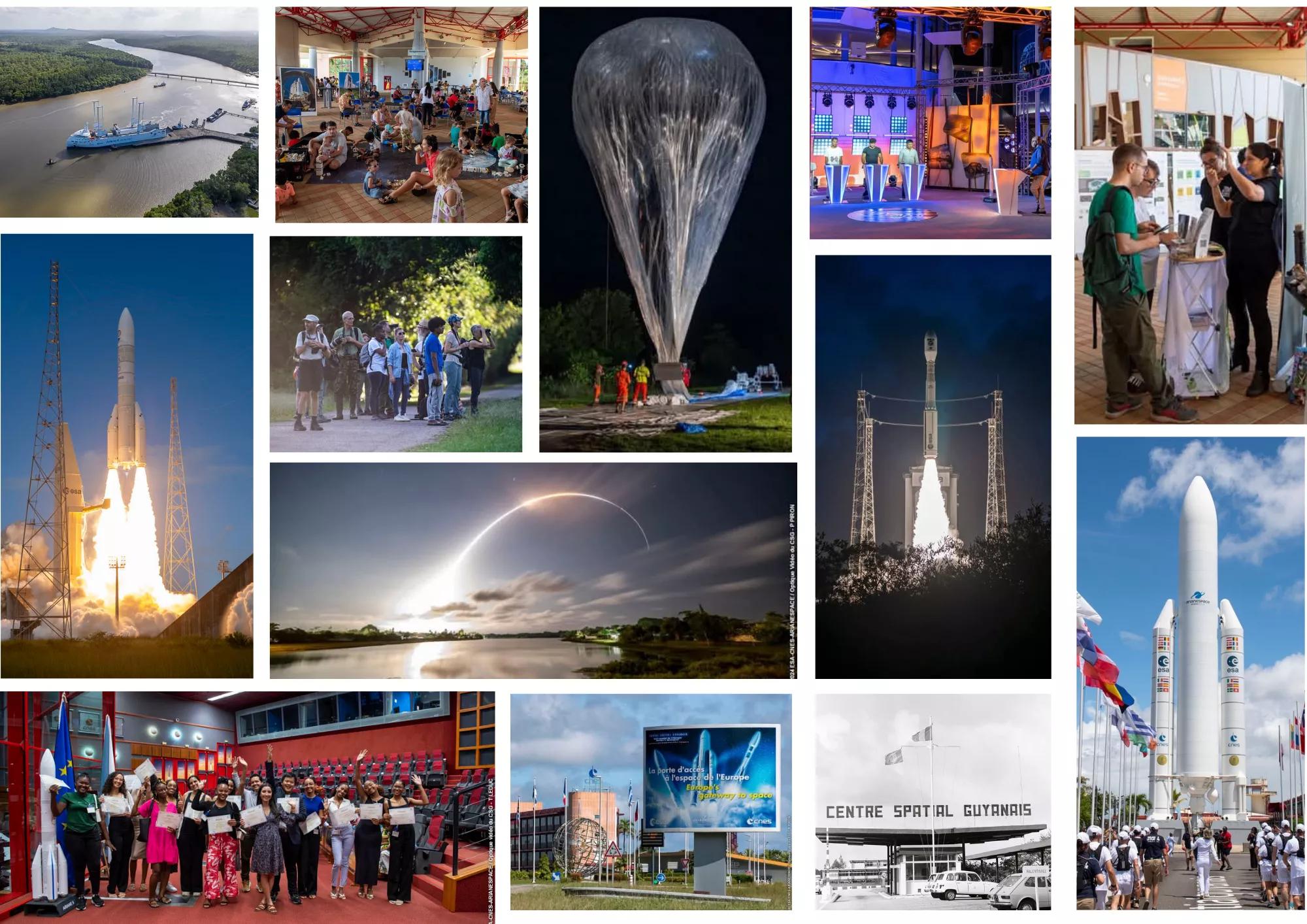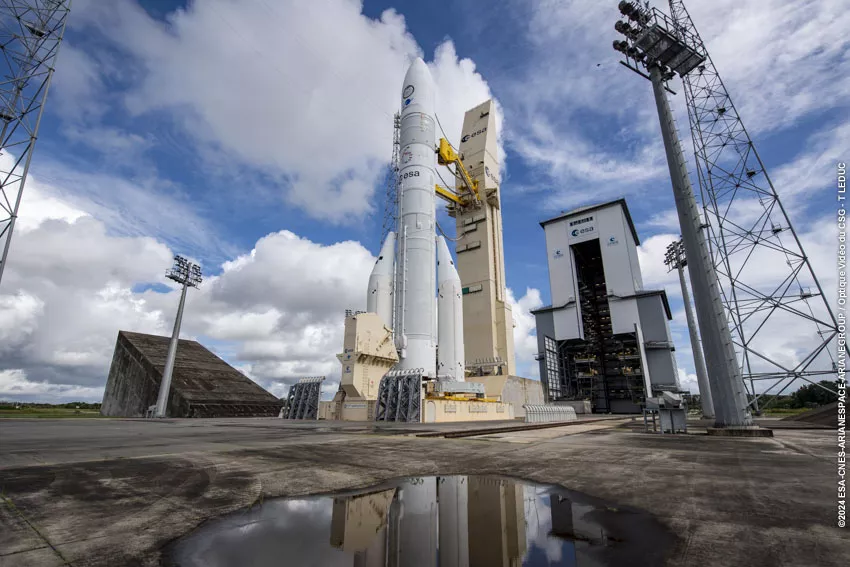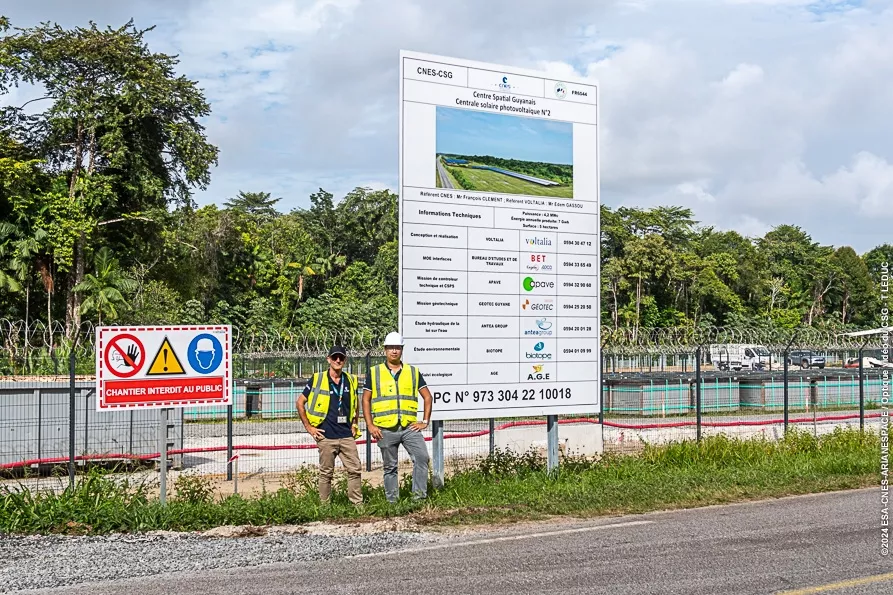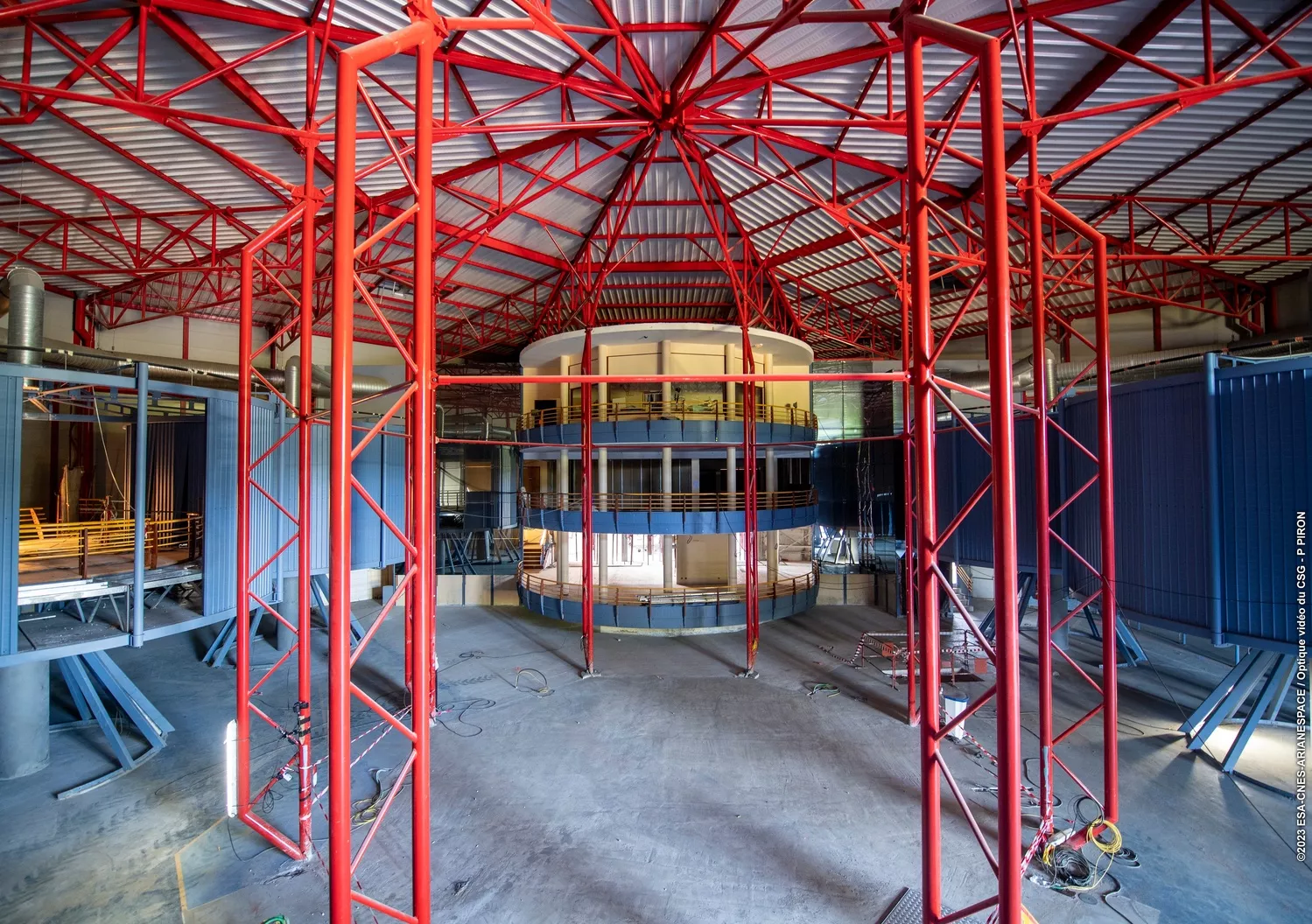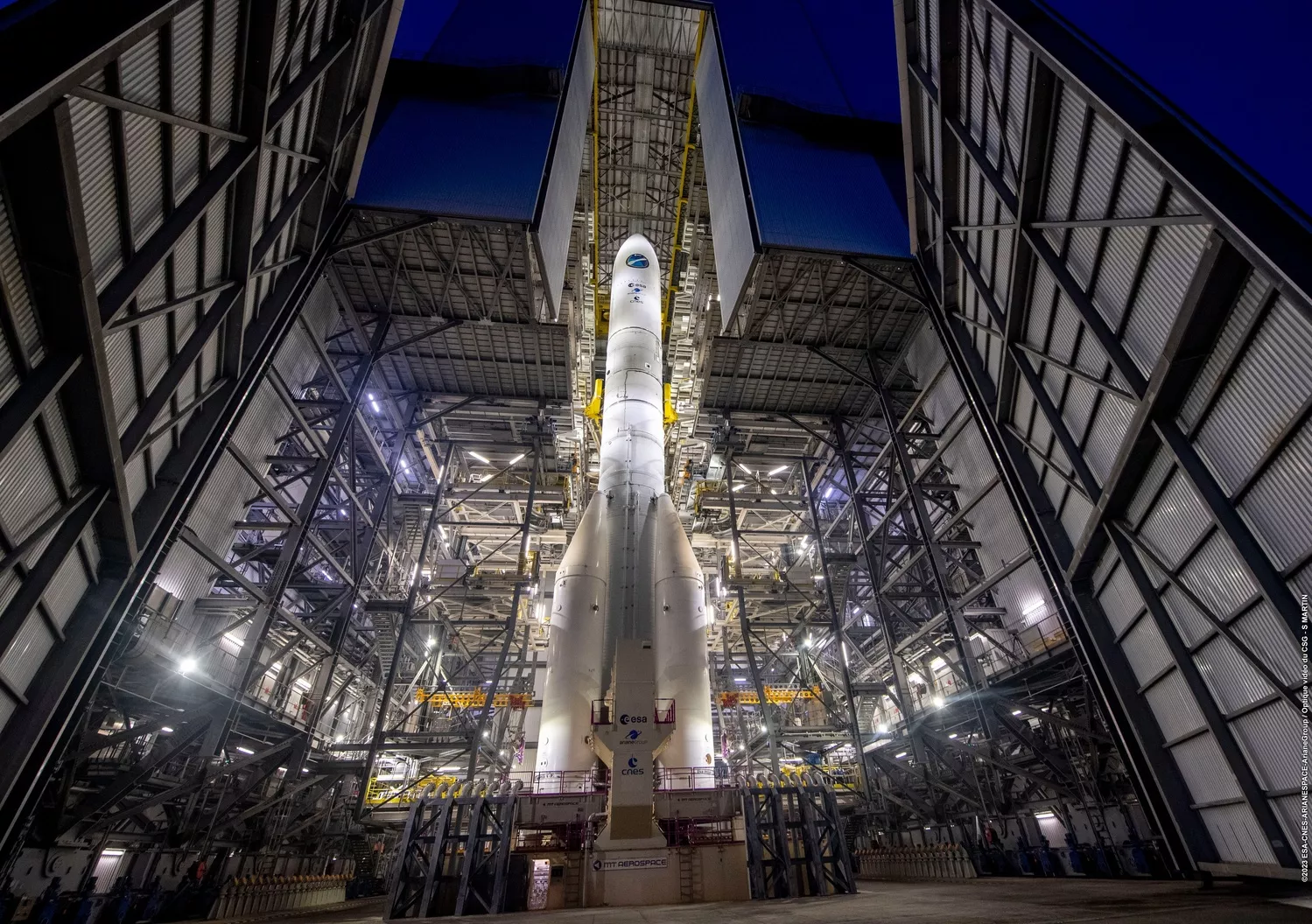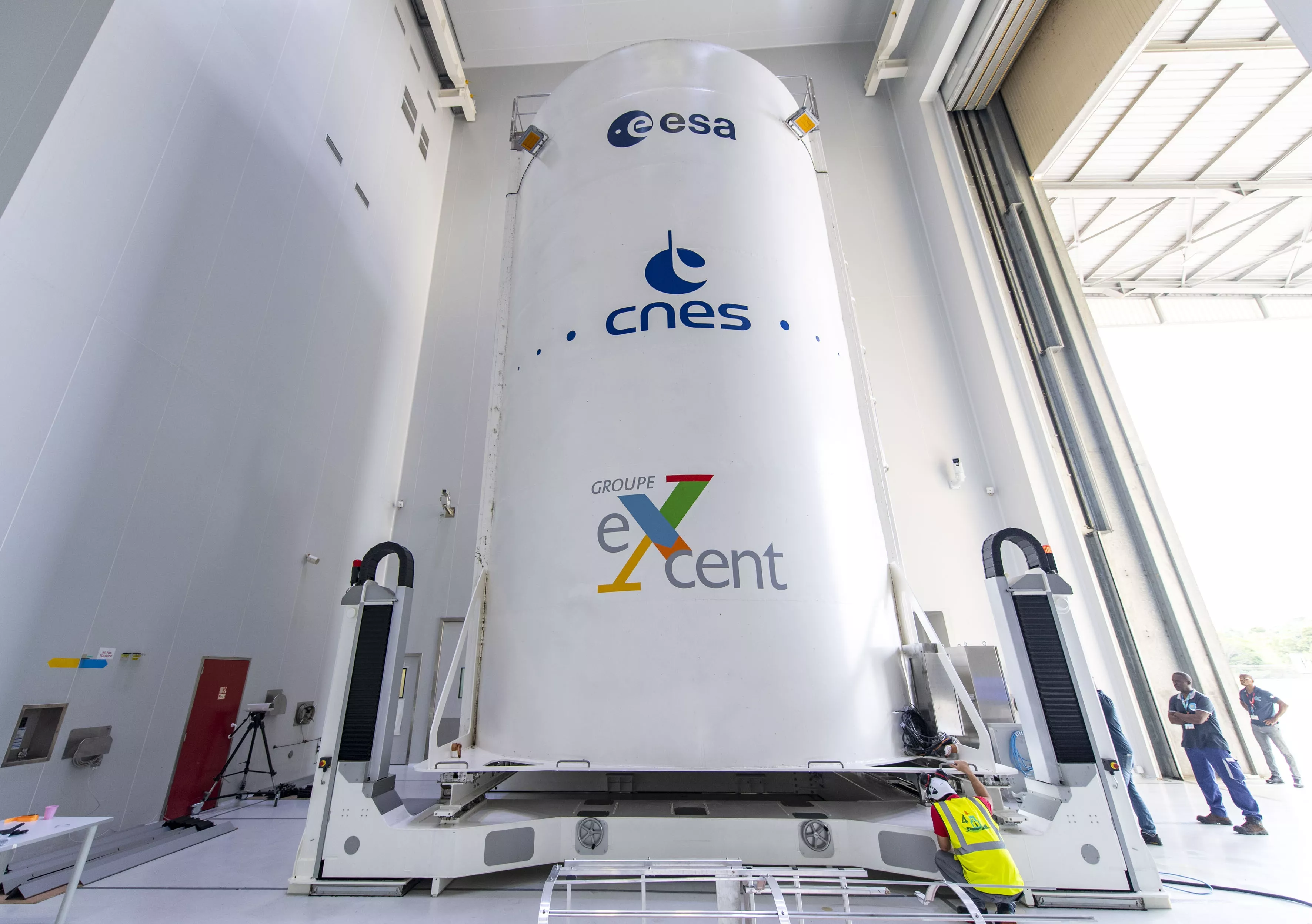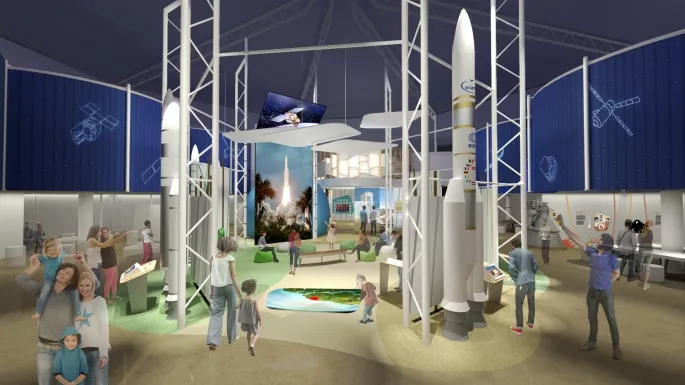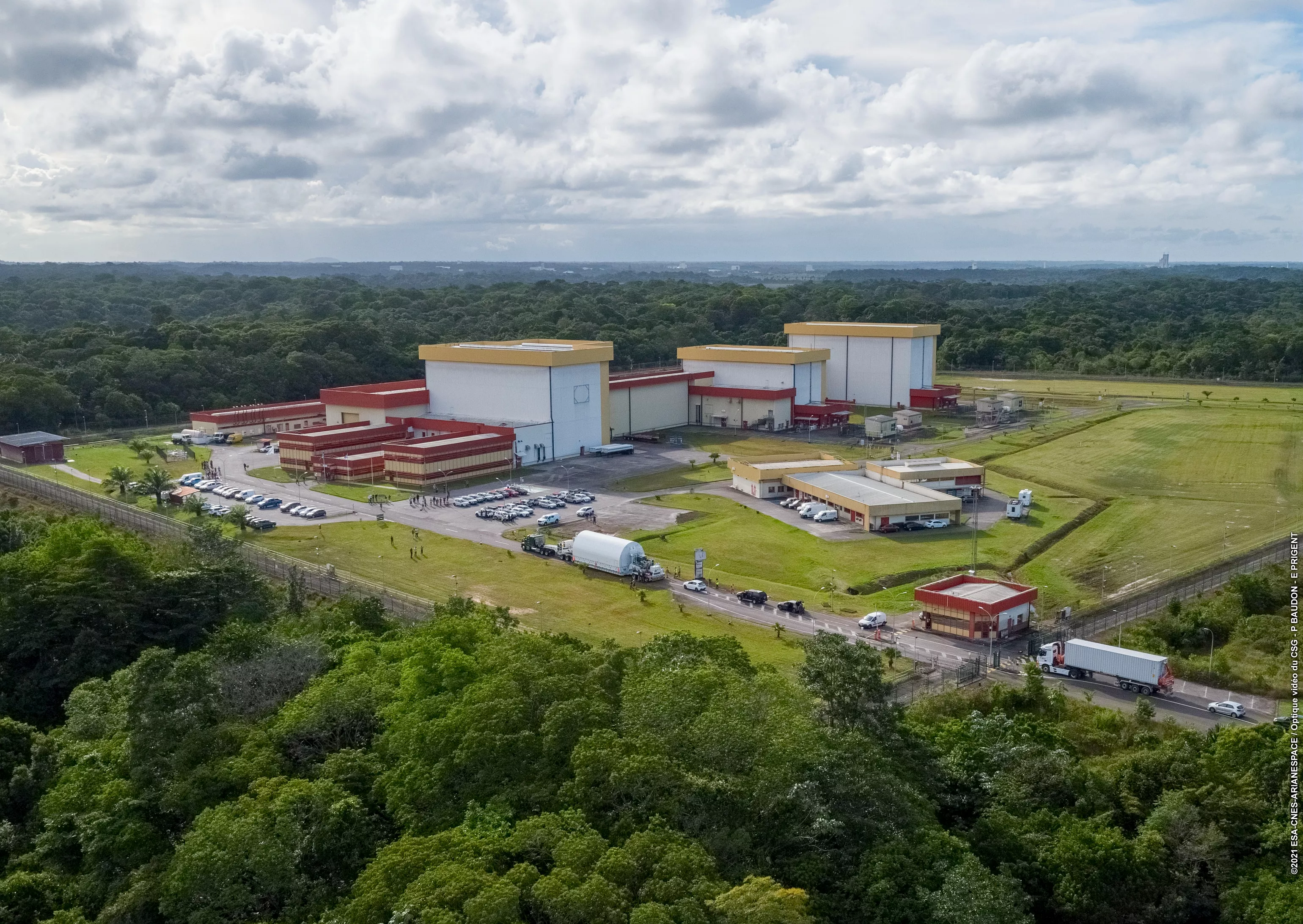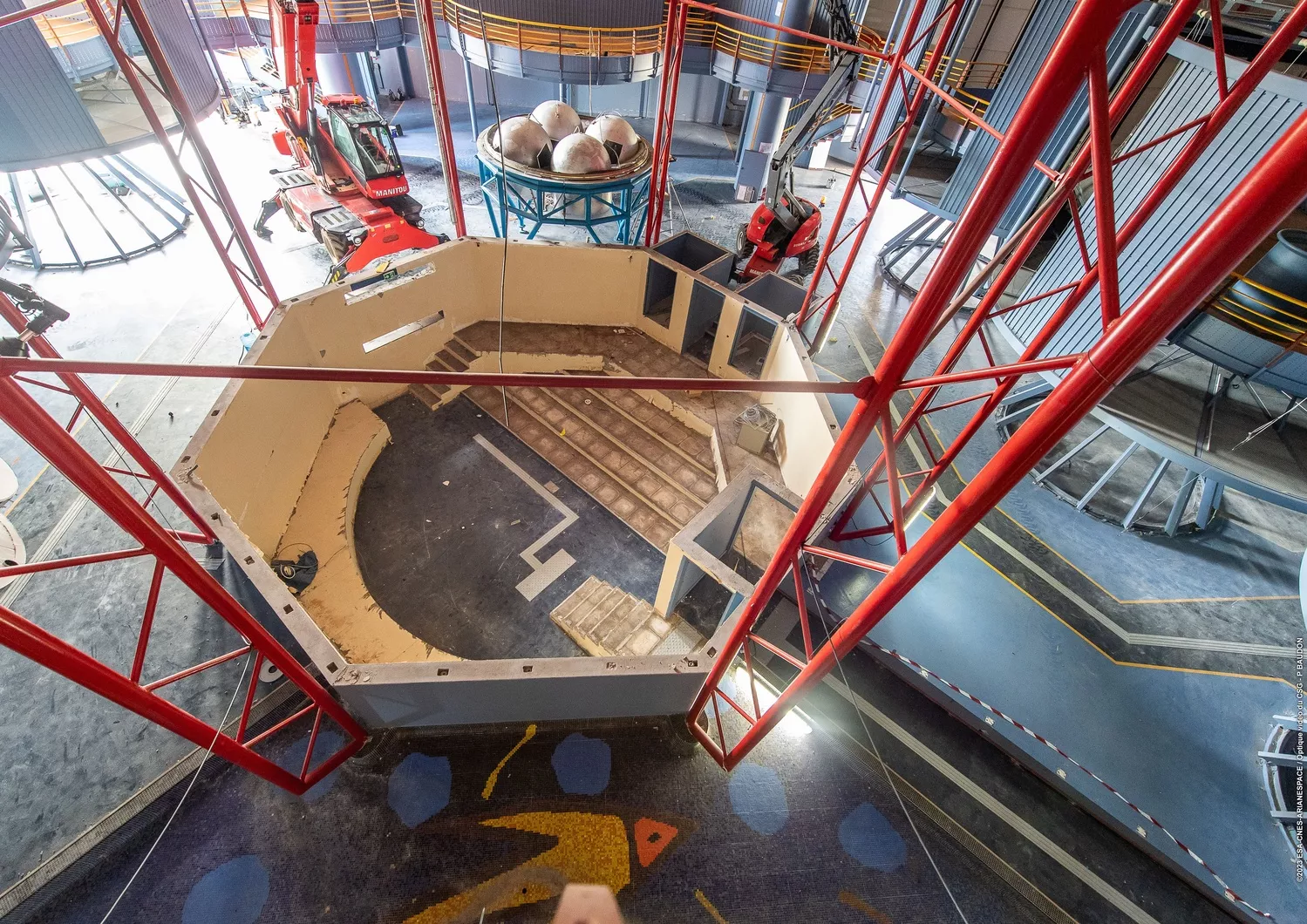2021, an eventful year
A look back at the various events and space projects that punctuated 2021 at Europe’s spaceport.
Launches in 2021
In 2021, Europe’s spaceport hosted 7 launches.
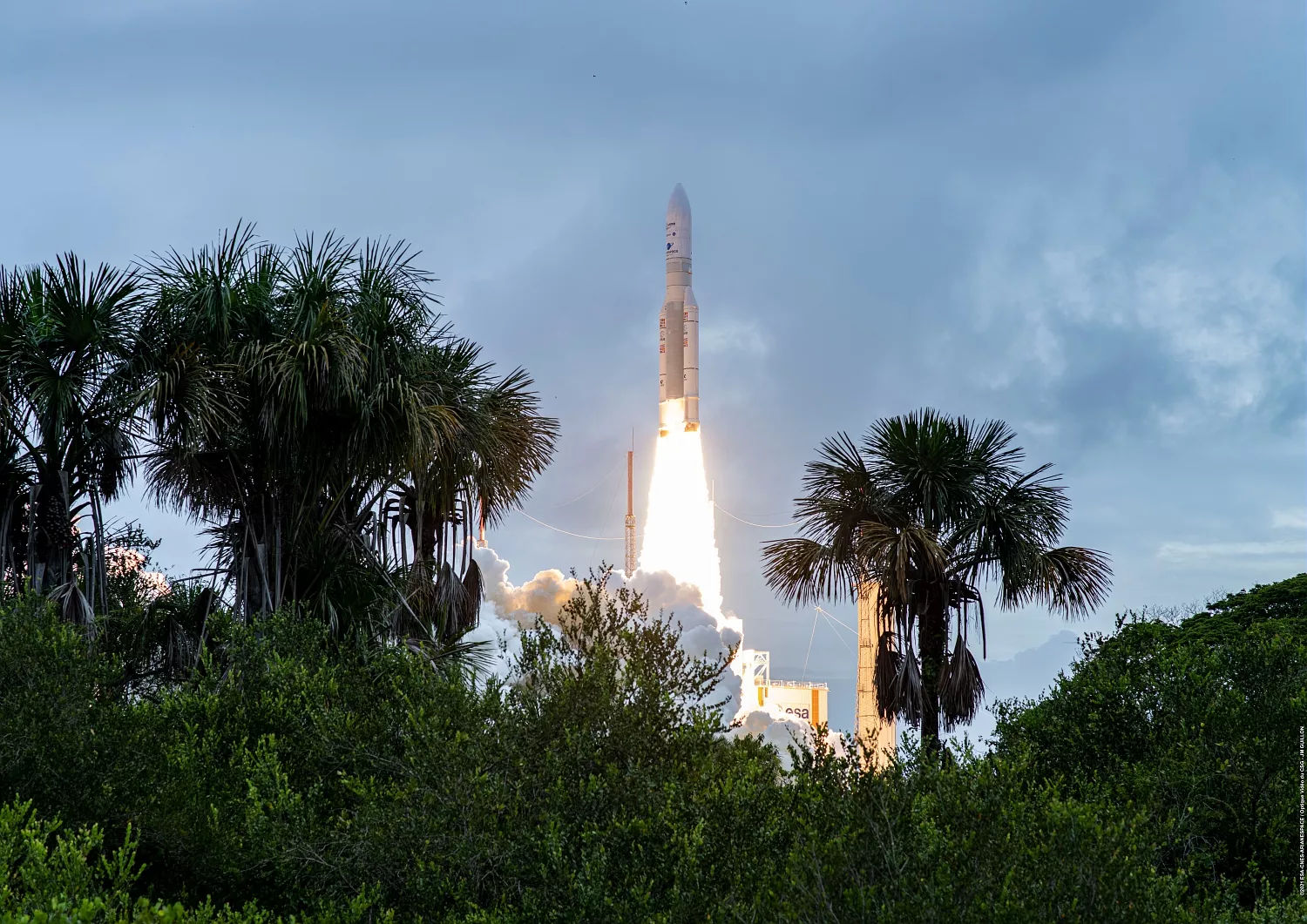
Titre brut
Three Ariane 5 launches
- The VA254, carrying the EUTELSAT QUANTUM and STAR ONE D2 satellites.
- The VA255 and the SES-17 and SYRACUSE 4A telecommunications satellites.
- The VA256, a historic launch at the end of the year placing the James Webb telescope in orbit. It is the largest and most powerful scientific space telescope ever launched into space.
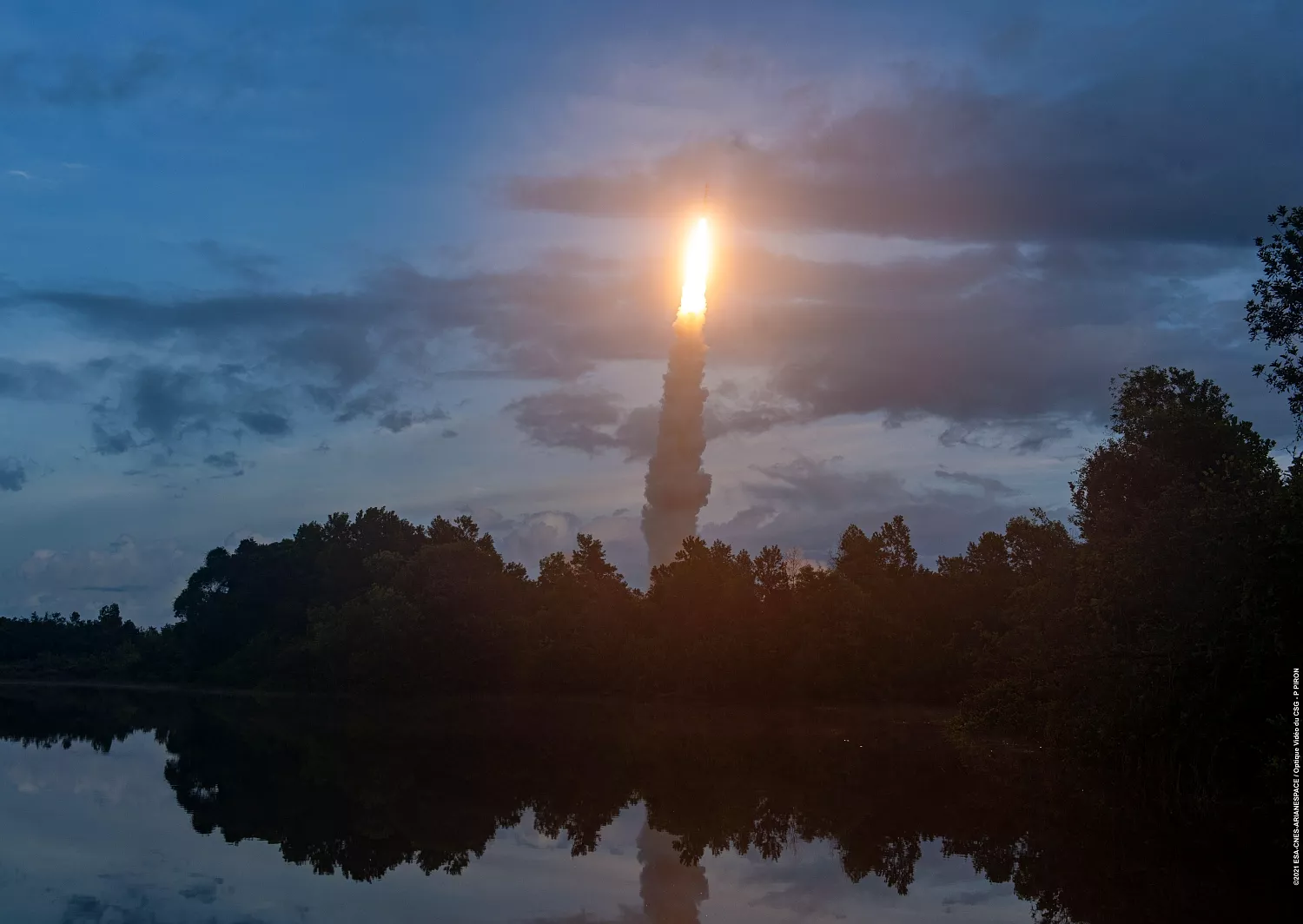
Titre brut
Three Vega launches
- The VV18, which placed the Pleiades Neo 3 Earth observation satellite in orbit, along with five auxiliary payloads: Norsat-3, Eutelsat, NanoAvionics/Aurora Insight and Spire.
- The VV19, which placed Pléiades Neo 4 and 4 micro- and nano-satellites in orbit (LEDSAT, RADCUBE, SUNSTORM and BRO-4).
- The VV20, which lifted off on 16 November 2021, carrying the three satellites in the CERES constellation.
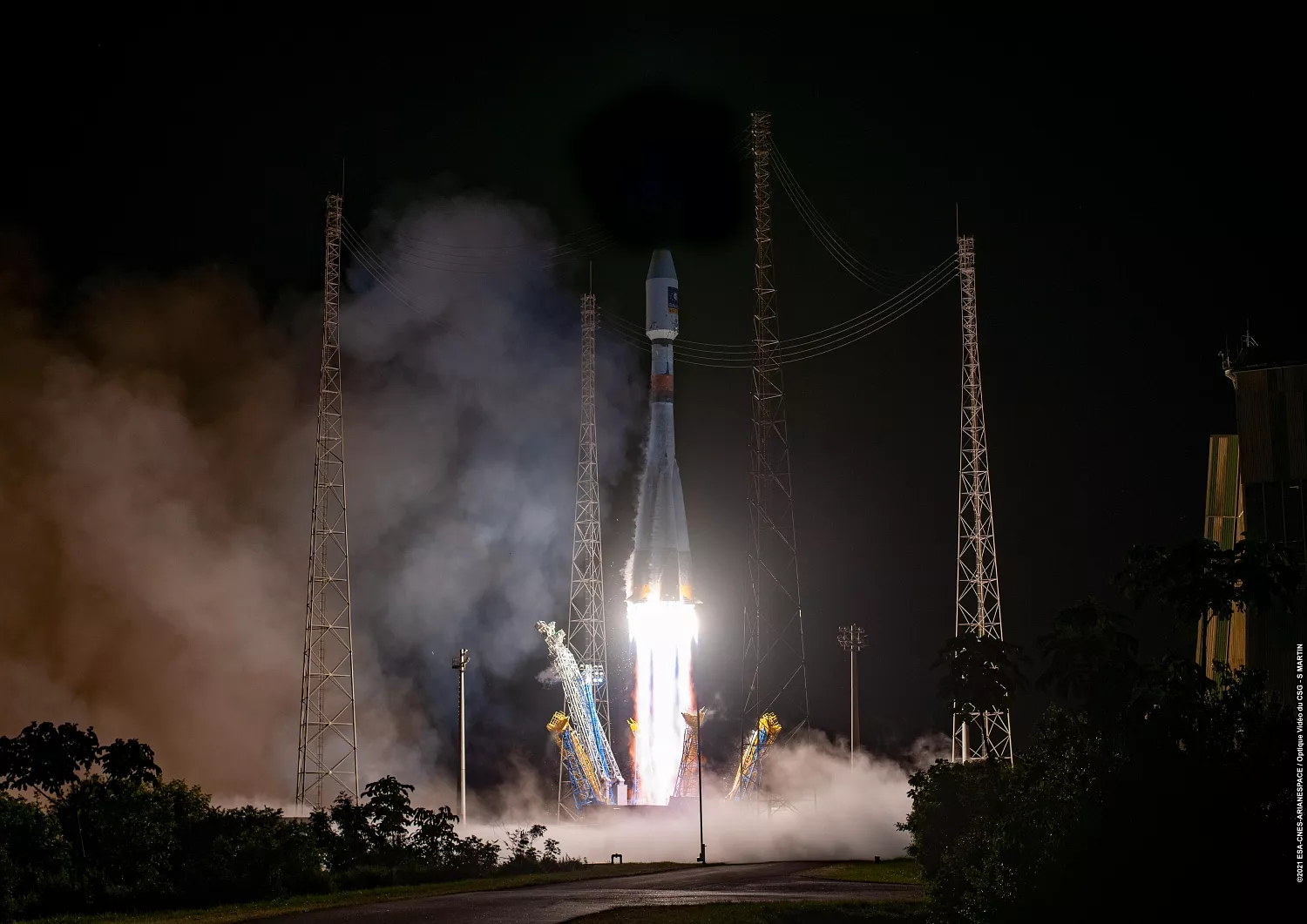
Titre brut
One Soyuz launch
During flight VS26 on 4 December 2021, the Russian launch vehicle successfully placed two new satellites in the GALILEO constellation in orbit, bringing the total number of operational satellites to 24.
These seven launches successfully placed 21 satellites in orbit for a wide range of missions. Europe’s spaceport has thus contributed to the deployment of numerous applications ranging from Earth observation to science, navigation and national defence.
Towards a new space age
Europe’s spaceport is fully committed to modernising its infrastructure and equipment to ensure the success of future space missions.
Last September, Europe’s spaceport inaugurated ELA 4, its ninth launch pad, which is currently accommodating the first components of the Ariane 6 launch vehicle for qualification phases, in preparation for combined testing.
The maiden flight of the new Vega-C light-lift launcher is also under preparation at the spaceport.
Refurbishment work has begun on the Diamant site, which will see the launch and landing of the Callisto and Themis launch vehicles. With this new site under construction, Europe’s spaceport is opening the door to mini- and micro-launchers. At the end of December, a call for expressions of interest was launched to identify European operators wishing to launch from the spaceport.
To accommodate these new launch vehicles and boost its availability, Europe’s spaceport has begun the process of modernising its telemetry and tracking resources.
Among them:
- The innovative Kassav 1 on-board system;
- The Amazonie 1 mobile radar;
- The “Poursuite” plan to renovate the servo-control of the Telemetry stations;
- SETTERS, the new remote operation system;
- Renovation of the Bretagne 2 tracking radar.
In 2021, the radar family also expanded with the new Romeo weather radar, which is much more powerful and faster at processing data.
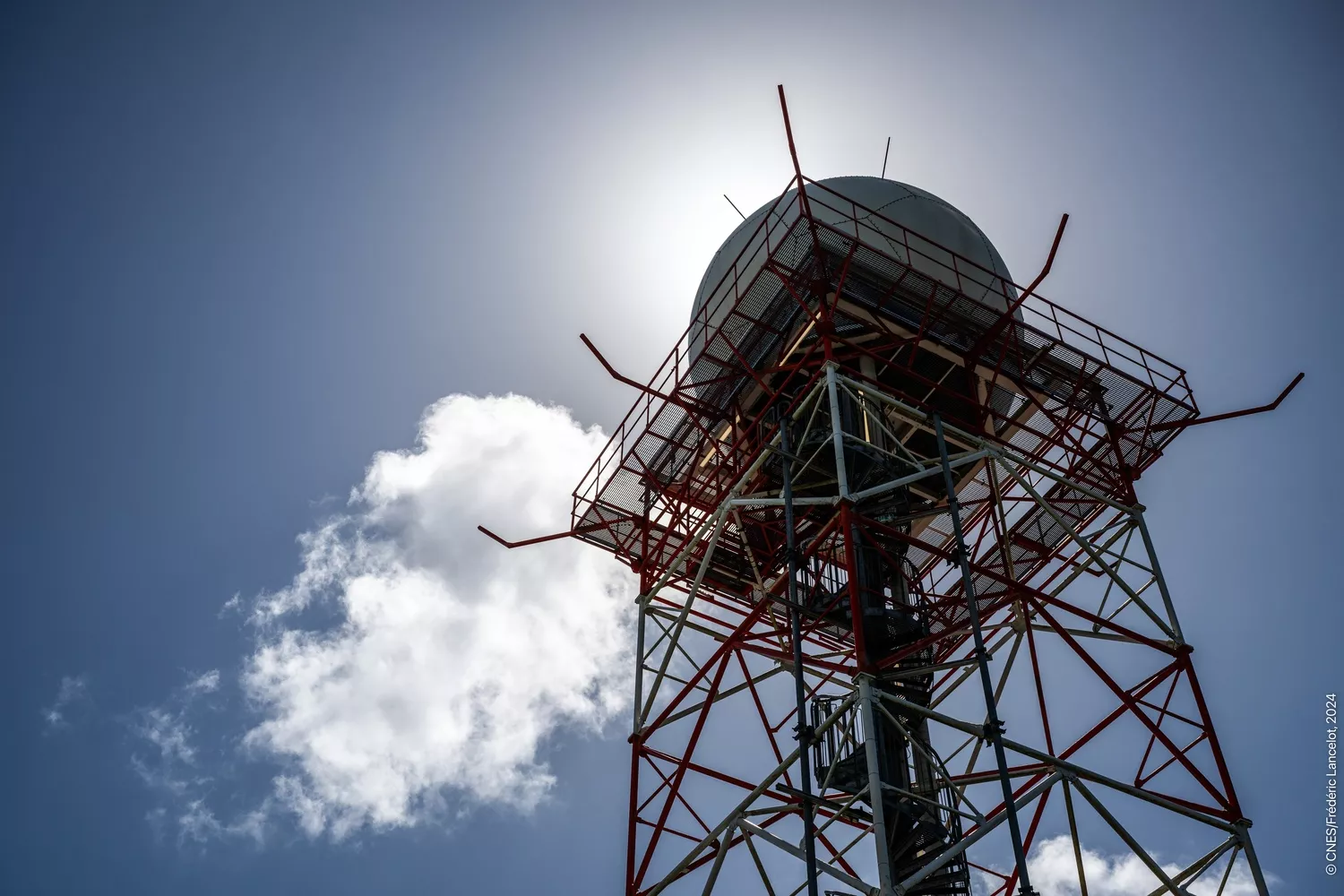
The Romeo radar at the weather station.
Environment and energy transition
Making Europe’s spaceport more environmentally friendly is also at the heart of its extensive greening plan.
As part of the energy transition at Europe's spaceport, CNES has begun renovating the air conditioning systems in its buildings.
Two biomass power plants and two solar farms will soon be completed: three of these infrastructures will be financed by CNES and ESA, and one of the two solar farms by the Stimulus Plan.
At the end of 2021, Voltalia won the invitation to tender launched by the French space agency to build one of the two solar farms, covering an area of 5 hectares and with a capacity of 4.2 megawatts.
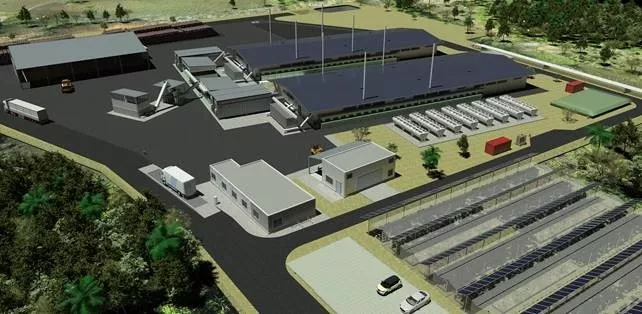
Artist's impression of the biomass plant.
In 2022, Europe’s spaceport will continue to develop the projects launched in 2021, aimed at transforming the site into a more modern, competitive and eco-responsible facility, in order to meet the challenges of the future.
In the same section
-
The French Space Agency’s commitments in French Guiana : review and outlook
29/01/2025Europe’s Spaceport: Recap of 2024 and outlook for 2025
28/01/2025Welcome to the new website of Europe's Spaceport
22/01/2025Energy transition at Europe’s spaceport
08/04/2024[Space Museum] update on the progress of the works
29/01/20242024 at Europe’s spaceport
15/01/2024Europe’s spaceport gets a new facility for satellites
06/12/2023[Space Museum] Progress report
25/09/2023EPCU S5 under construction
05/09/2023
